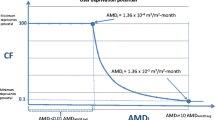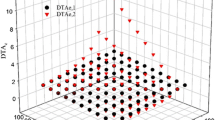Abstract
Purpose
The WULCA group, active since 2007 on Water Use in LCA, commenced the development of consensus-based indicators in January 2014. This activity is planned to last 2 years and covers human health, ecosystem quality, and a stress-based indicator. This latter encompasses potential deprivation of both ecosystem and human, hence aiming to represent potential impacts more comprehensively than any other available LCA-oriented method assessing the “water scarcity footprint” (ISO 2014).
Methods
A series of three expert workshops, including non-LCA experts from hydrology, eco-hydrology, and water supply science, was organized specifically on the topic of this generic midpoint indicator. They were held in Zurich on 10th September, in San Francisco on 5th October and in Tsukuba on 27th October 2014. In total 49 experts attended. The specific objectives of the workshops were twofold. First, it was to present the identified options of the stress-based indicator narrowed down by the active members of WULCA during the first 8 months of the project and to receive comments on the relevance, usefulness, acceptability, and focus of the selected indicator. Second, the workshop covered different challenges in the modeling of the indicator and presented the experts with background information and specific questions. This paper summarizes the discussions and outcome of these workshops. Where no agreement was reached, the working group of active members is considering all inputs received and continues the work.
Results and discussion
The discussion covered first the question to be answered by such indicator, resulting on an agreement on the evaluation of the potential to deprive other users of water, independently of who the user is (i.e., human or ecosystems). Special attention was given to the special case of arid areas as well as the definition of environmental water requirements. Specific modeling challenges were then addressed: definition and quantification of human and ecosystem water demand, consideration of green water and terrestrial ecosystems, sources of data, distinction of groundwater and surface water, and temporal and geographical resolution.
Conclusions
The input, decisions, and points of discussion were compiled and brought back within the group of active members. The group is using the recommendations and works further on the harmonization of the points of disagreement. It is expected that a selection of indicators representing different ways to address the most important issues will be produced and tested in spring 2015. The analysis of the result should lead to a provisional recommendation by summer 2015.

Similar content being viewed by others
References
Bayart J-B et al (2010) Framework for assessment of off-stream freshwater use within LCA. Int J Life Cycle Assess 15(5):439
Berger M et al (2014) Water accounting and vulnerability evaluation (WAVE): considering atmospheric evaporation recycling and the risk of freshwater depletion in water footprinting. Environ Sci Technol 48(8):4521–4528
Boulay A-M et al (2015a) Analysis of water use impact assessment methods (part A): evaluation of modeling choices based on a quantitative comparison of scarcity and human health indicators. Int J Life Cycle Assess 20(1):139–160
Boulay A-M et al (2015b) Analysis of water use impact assessment methods (part B): applicability for water footprinting and decision making with a laundry case study. Int J Life Cycle Assess. doi:10.1007/s11367-015-0868-9
Gassert F et al (2013) AQUEDUCT Global Maps 2. 0, Washington, DC
Gerten D et al (2013) Towards a revised planetary boundary for consumptive freshwater use: role of environmental flow requirements. Curr Opin Environ Sustain 5(6):551–558
Hanasaki N et al (2008a) An integrated model for the assessment of global water resources—part 1: model description and input meteorological forcing. Hydrol Earth Syst Sci 12(4):1007–1025
Hanasaki N et al (2008b) An integrated model for the assessment of global water resources—part 2: applications and assessments. Hydrol Earth Syst Sci 12(4):1027–1037
Hanasaki N et al (2010) An estimation of global virtual water flow and sources of water withdrawal for major crops and livestock products using a global hydrological model. J Hydrol 384(3):232–244
Jolliet O et al (2014) Global guidance on environmental life cycle impact assessment indicators: findings of the scoping phase. Int J Life Cycle Assess 19(4):962–967
Kounina A et al (2013) Review of methods addressing freshwater use in life cycle inventory and impact assessment. Int J Life Cycle Assess 18:707–721
Loubet P et al (2013) Assessing water deprivation at the sub-river basin scale in LCA integrating downstream cascade effects. Environ Sci Technol 47(24):14242–14249
Müller Schmied H, Eisner S, Franz D, Wattenbach M, Portmann FT, Flörke M, Döll P (2014) “Sensitivity of simulated global-scale freshwater fluxes and storages to input data, hydrological model structure, human water use and calibration,” Hydrol Earth Syst Sci 18(9):3511–3538
Pastor AV, Ludwig F, Biemans H, Hoff H, Kabat P (2013) “Accounting for environmental flow requirements in global water assessments,” Hydrol Earth Syst Sci Discuss 10(12):14987–15032
Rockström J, Steffen W, Noone K, Persson Å, Chapin FS, III, Lambin E, Lenton TM, Scheffer M, Folke C, Schellnhuber H, Nykvist B, De Wit CA, Hughes T, van der Leeuw S, Rodhe H, Sörlin S, Snyder PK, Costanza R, Svedin U, Falkenmark M, Karlberg L, Corell RW, Fabry VJ, Hansen J, Walker B, Liverman D, Richardson K, Crutzen P, Foley J (2009) Planetary boundaries:exploring thesafe operating space for humanity. Ecology and Society 14(2):32
Rost S et al (2008) Agricultural green and blue water consumption and its influence on the global water system. Water Resour Res 44(9). doi:10.1029/2007WR006331
Van Zelm R et al (2011) Implementing groundwater extraction in life cycle impact assessment: characterization factors based on plant species richness for The Netherlands. Environ Sci Technol 45(2):629–635
Verones F, Pfister S, Hellweg S (2013) Quantifying area changes of internationally important wetlands due to water consumption in LCA. Environ Sci Technol 47:9799–9807
Acknowledgments
We acknowledge the contribution of the hosting institutions (ETH Zurich, ACLCA and the National Institute of Advanced Industrial Science and Technology of Tsukuba) as well as the financial support of the industrial sponsors supporting WULCA: Hydro-Québec, Veolia Environnement, Danone, ExxonMobil, Cascades, Unilever, Cottons Inc, GDF-Suez, and Mitacs, the Canadian funding agency.
Author information
Authors and Affiliations
Corresponding author
Additional information
Responsible editor: Mary Ann Curran
Other meeting participants were as follows: Laura Scherer, Jean-Jacques Beley, Julie Clavreul, Sara Marks, Namy Espinosa, Ines Francke, Sandi Ruiz, Jan Pariyapat Nilsalab, Junichi Nakahashi, Kenji Ohashi, Kiyotaka Tahara, Naji Tannous, Maite Aldaya, Laura Roibas, Helena Wessman, Elina Saarivuori, Ed Barnes, Briana Niblick, Annette Koehler, Angeline de Beaufort, Michelle Wallace, Bruce Vigon, Kate Brauman, Pablo Tirado, Bo Weidema, Shigehiro Yokota, and two anonymous participants from industry.
Rights and permissions
About this article
Cite this article
Boulay, AM., Bare, J., De Camillis, C. et al. Consensus building on the development of a stress-based indicator for LCA-based impact assessment of water consumption: outcome of the expert workshops. Int J Life Cycle Assess 20, 577–583 (2015). https://doi.org/10.1007/s11367-015-0869-8
Received:
Accepted:
Published:
Issue Date:
DOI: https://doi.org/10.1007/s11367-015-0869-8




